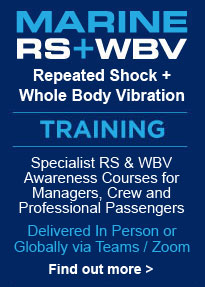Tiger One - RIB Accident at Night on Thames

08.09.2019

'Tiger One' - RIB Accident at night on River Thames London
The commercially operated RIB ‘Tiger One’ hit a mooring buoy on the River Thames, London, at about 26 knots in darkness. Two passengers and the boat’s two crew were taken to hospital with minor injuries. Tiger One was severely damaged.
The skipper and his lookout did not see the mooring buoy in time to take avoiding action. The buoy’s light might have been difficult to see against the back scatter of shore lights.
At 1738 on 17 January 2019 the skipper was navigating solely by eye and had either thought that Tiger One was closer to the centre of the navigable channel, or had forgotten that the buoy was there. The crew had limited experience of operating in the area during the hours of darkness.
More serious consequences resulting from the collision were prevented by Tiger One’s robust construction, seating arrangements, and the skipper’s use of a kill cord. However, the circumstances of the collision indicate that there is significant potential for more serious consequences to result from similar high-speed accidents in the future.
Following the accident, the Port of London Authority has, among other things removed its authorisation for open deck high-speed craft to navigate above 12 knots during the hours of darkness, and taken steps to enable these craft to report passenger numbers via the automatic identification system (AIS).
The Royal Yachting Association (RYA) has included guidance on night operations and passenger number reporting in its recently revised guidance on passenger safety on board small commercial high-speed craft and experience rides.
Potential consequences
Tiger One’s impact with the buoy resulted in injuries to the crew and passengers. The RIB was also seriously damaged. In view of the speed of impact, that the consequences were not more significant was probably due to several factors. These included the angle of impact, the robust construction of the hull, the softening of the landing by the suspension seats, and the provision of grab rails for the passengers to hold on to.
Following the impact, the operation of the kill cord also prevented the uncontrolled movement 10 of the RIB in the time it would have taken the skipper to recover and make sense of the situation. The skipper’s urgency call was prompt, but his report that there were ten persons on board rather than eight, which was incorrect and misleading, was indicative of the degree of shock he had experienced.
Tiger One might have overturned in marginally different circumstances, with passengers and crew thrown into the cold river. Although all were wearing lifejackets, which would have kept their heads clear of the water, they had no means of raising an alarm, other than the whistles on the lifejackets, and their rescue would have been dependent on passing traffic or witnesses ashore. Even then, rescuers would not have been aware of the numbers of persons that had been on board as Thames Byelaws require only Class IV, V and VI passenger vessels to report to VTS the number of passengers embarked before commencing a passage. In darkness and in cold water, a lengthy rescue would have undoubtedly resulted in hypothermia or worse.
The potential severity of the consequences of future similar accidents of this type warrants the review and amendment of the regulatory framework that authorises open craft to operate in darkness on the River Thames at speeds exceeding the promulgated limits.
All images are copyright NEXT GEN Marine Ltd 2025 unless otherwise stated.
This does not exclude the owner's assertion of copyright over the material.














